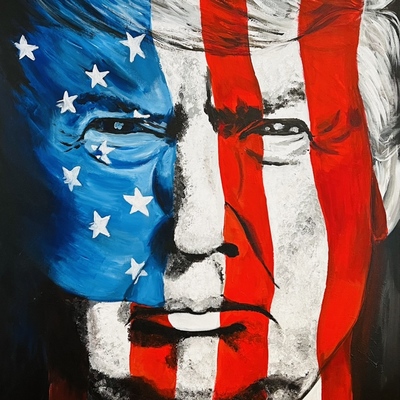Stay informed on the latest Truth Social posts from Donald Trump (@realDonaldTrump) without the doomscrolling. Consider it a public service for your mental health. (Why?)
- The United States spends almost $1 trillion on defense annually.
- The U.S. defense expenditure is 3.38% of its GDP.
- Trump demands NATO allies boost their defense spending to 5% of GDP.
- Trump threatens to stop protecting allies who do not commit to spending 5% of GDP on defense.
- NATO's current agreed target for defense spending is 2% of GDP.
- Mark Rutte, NATO chief, proposes raising spending to 3.5% of GDP and an additional 1.5% for wider security.
- Spain threatens to derail the NATO summit due to resistance to Trump's 5% demand.
- Spanish Prime Minister Pedro Sanchez states a 5% defense spending goal would be incompatible with Spain's welfare state.
The post's primary focus is on defense spending and alliance commitments rather than specific corporate earnings or broad economic policy directly impacting the S&P 500. While geopolitical tensions can have an indirect market impact, this statement from a non-sitting president is unlikely to trigger an immediate, significant shift in the S&P 500. Long-term implications for defense contractors or global trade due to a weaker NATO are possible but not an immediate S&P 500 driver.
The post presents a significant geopolitical risk by discussing a potential major shift in U.S. foreign policy regarding NATO, including threats to withdraw protection from allies. This could severely undermine the collective defense principle of NATO, leading to increased instability, heightened security concerns for member states, and potentially altering global power dynamics if key alliances are weakened.
- Commodities: Unlikely to see significant direct impact. Gold (XAU) might see a marginal safe-haven bid if broader geopolitical tensions rise due to perceived alliance instability, but this post alone is not a strong catalyst. Oil (WTI) is not directly impacted.
- Currencies (Forex): The US Dollar Index (DXY) might see minor safe-haven flows if geopolitical uncertainty increases, or could face pressure if the prospect of US isolation becomes more real. However, the impact from this single post is likely negligible.
- Global Equities: No direct, immediate impact on global equities. Defense sector stocks might see some speculative interest based on the discussion around increased spending, but overall markets like S&P 500, Nasdaq, STOXX 600, Nikkei 225, and Hang Seng are unlikely to move significantly.
- Fixed Income (Bonds): US 10Y and 2Y yields are unlikely to be substantially affected. A flight to safety might theoretically lower yields, but the current post does not present an immediate crisis that would trigger such a move.
- Volatility / Derivatives: The VIX is unlikely to spike. The content is political rhetoric about a potential future policy, not an immediate shock to market stability.
- Crypto / Digital Assets: Bitcoin (BTC) and other digital assets are unlikely to be directly impacted by this post. Their price action would remain primarily driven by broader macro liquidity, regulatory news, or tech correlations.
- Cross-Asset Correlations and Systemic Risk: No signs of breakdowns in normal correlations or systemic risk are indicated by this post. It's a discussion of policy direction rather than a financial shock.
- Retail Sentiment / Market Psychology: Unlikely to trigger significant retail speculation or shifts in broad market psychology. The topic is more traditional geopolitical strategy than a catalyst for meme stocks or altcoin movements.

